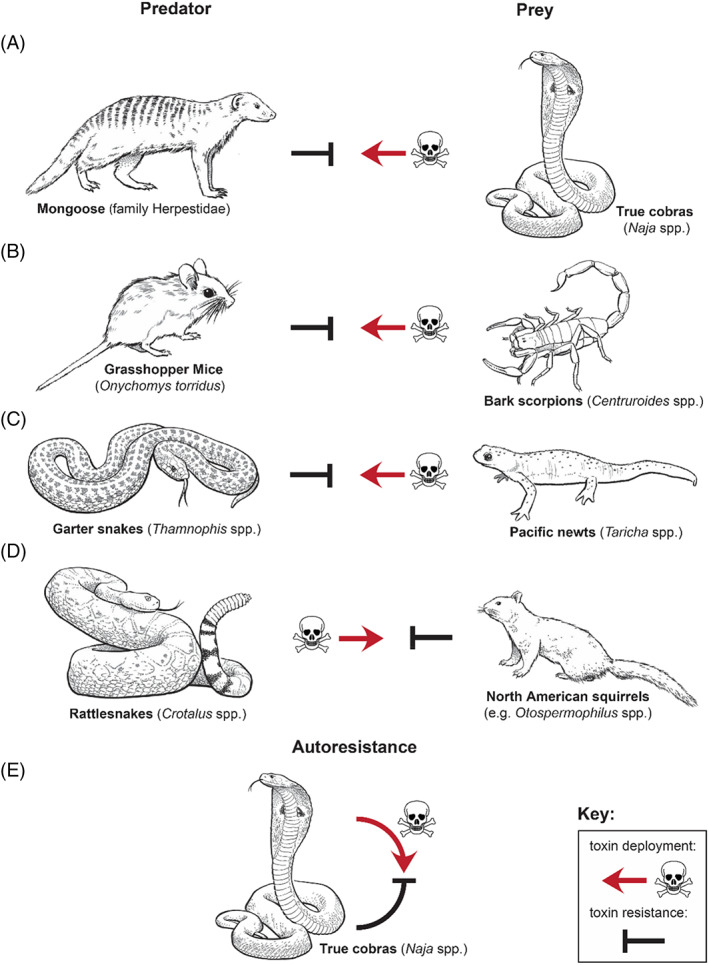Fig. 1.

Well‐known examples of ecological contexts underpinning toxin resistance. (A–C) predator resistance, where a predator is resistant to the toxins of its prey. (A) The mongoose is known to predate on true cobras. (B) The grasshopper mouse preys on bark scorpions. (C) Garter snakes prey on toxic newts. (D) Prey resistance is resistance of a prey species to the toxins of a predator and is exemplified here by rattlesnakes preying on North American ground squirrels. (E) Autoresistance is where an animal is resistant to its own toxins. The example shown here is of true cobras that show resistance to cobra α‐neurotoxins.
